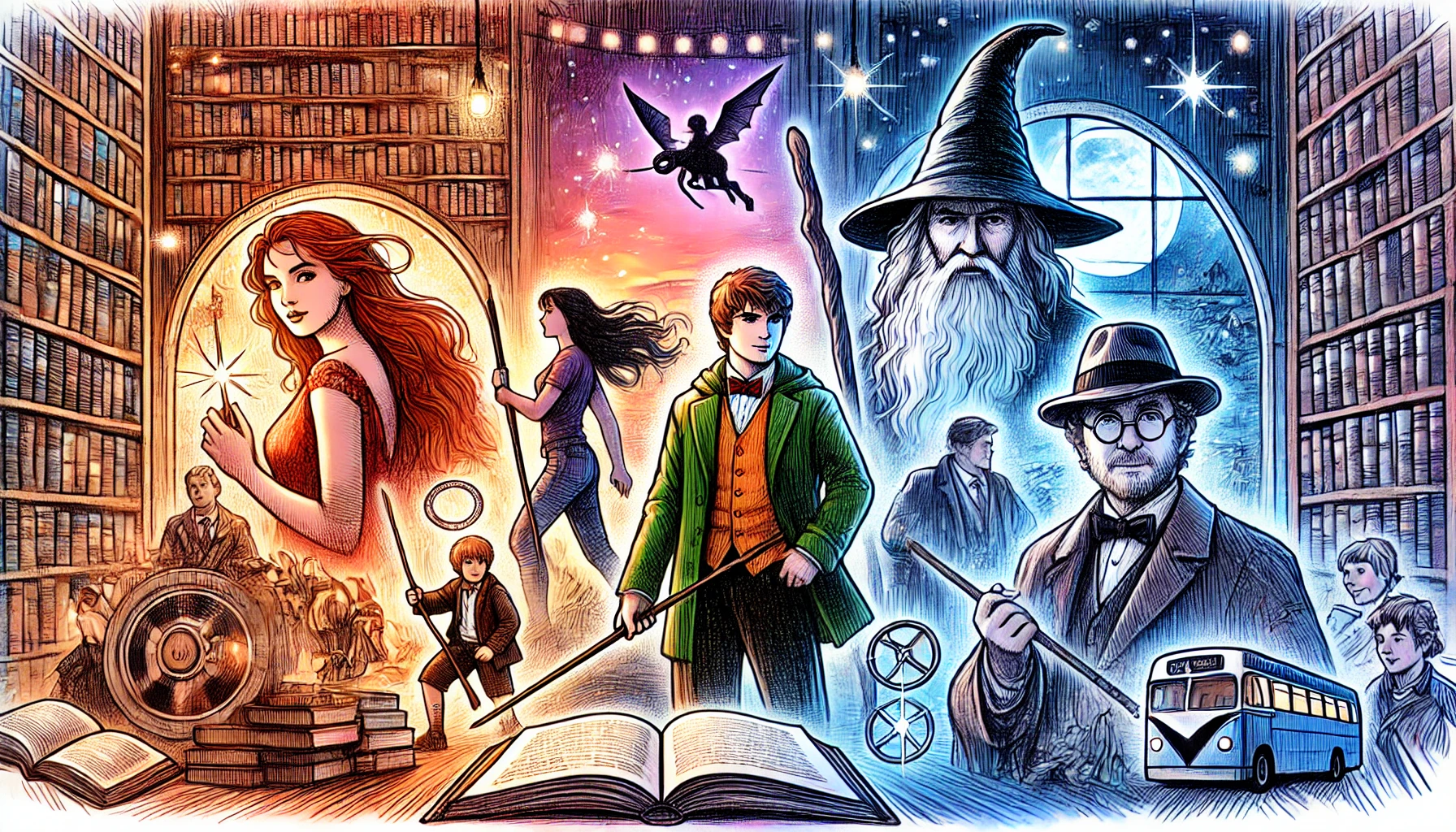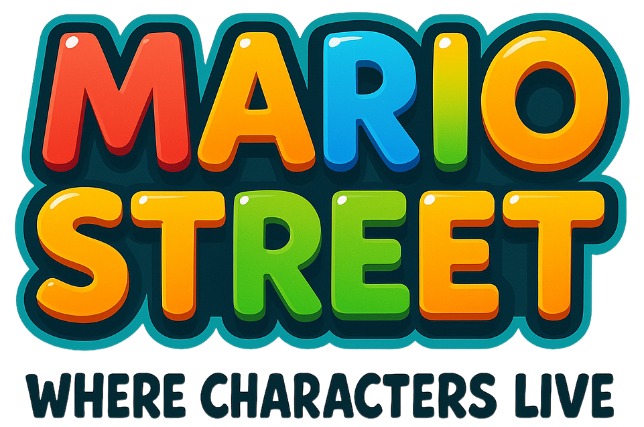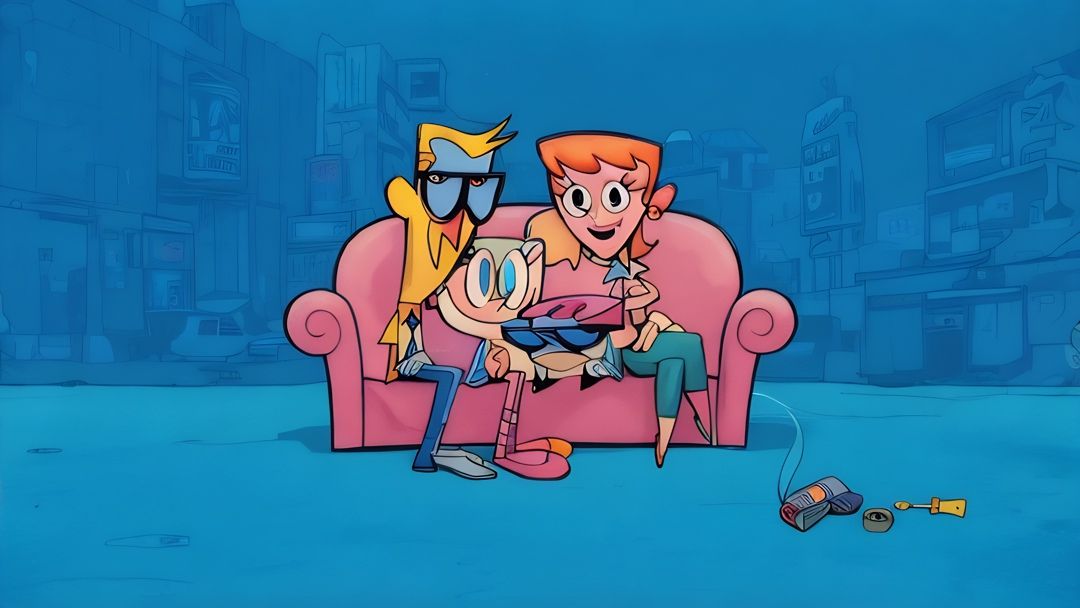Where Ink Meets Imagination—and Then the Spotlight
It begins with a sentence. Maybe even just a name. That’s how legends are born. Before costumes and catchphrases, before billion-dollar box office debuts and midnight premieres, these characters lived quietly—on the page, in the mind of a reader, in the scribbled margin of a favorite book. But when the silver screen came calling, something magical happened. They leaped from black-and-white text into vibrant color, brought to life by actors, directors, and designers—but more than anything, by fans.
This is the story of characters who were already unforgettable in print—and then became immortal through film and television. From young wizards and brooding detectives to rebel archers and time-bending travelers, these icons made the rare and powerful journey from fiction to phenomenon. They not only survived the transition—they conquered it. This is where literary imagination meets cinematic legend. And the results? Absolutely spellbinding.
The Boy Who Lived—and Launched a Global Obsession
Let’s start with the lightning-scarred elephant in the room: Harry Potter. When J.K. Rowling’s bespectacled wizard first appeared on bookshelves, he was an underdog with a broomstick and a heart full of questions. But as the series grew, so did the fandom—and by the time Harry Potter and the Sorcerer’s Stone hit theaters, the world was ready.
Daniel Radcliffe didn’t just play Harry—he became him. Watching the trio of Harry, Hermione, and Ron grow up on screen was like growing up with them. Fans cried over Dobby, cheered during Quidditch, and gasped when Snape’s true motives were revealed. The films became cultural events, and the characters—already beloved from the books—became visual icons. Robes, wands, and house scarves became everyday attire for millions.
But what made Harry’s transition from page to screen so legendary wasn’t just the special effects or the star-studded cast. It was the emotional truth at the heart of the story. Friendship. Bravery. Choosing light in the darkest of times. These themes were already there in ink—but seeing them come to life made them permanent.

Hobbits, Rings, and One Epic Adaptation
Middle-earth was a literary triumph long before Peter Jackson turned it into cinematic gold. J.R.R. Tolkien’s The Lord of the Rings is a masterclass in world-building, language, and lore. But adapting it for the screen? That was a task many deemed impossible. And yet, when The Fellowship of the Ring premiered, a new era began.
Frodo Baggins, Samwise Gamgee, Aragorn, Gandalf—names that had long stirred imaginations were now part of mainstream conversation. Viggo Mortensen’s rugged intensity, Ian McKellen’s booming wisdom, Elijah Wood’s soulful eyes—these portrayals didn’t just live up to the books; they expanded them. Gollum, a whispering riddle of a creature, became a CGI benchmark and a symbol of tragic obsession.
The trilogy didn’t merely visualize Tolkien’s world—it invited us to walk its paths, hear its songs, and feel its shadows. Every detail, from the shimmer of Rivendell to the despair of Mordor, honored the original work while creating something new. And for fans of the books, it was like stepping into a dream they’d been reading for decades.
The Girl on Fire Ignites a Revolution
Suzanne Collins gave us Katniss Everdeen—a reluctant rebel, a hunter turned hero, a survivor in a world gone cold. Readers connected instantly with her raw resilience and complex moral compass. But it was Jennifer Lawrence’s fiery performance in The Hunger Games that catapulted Katniss into icon status.
With her braid, her bow, and her famous three-finger salute, Katniss became a symbol not just in Panem, but in pop culture. The books were gripping—but the films gave the rebellion a face, a voice, and a heartbeat. The costumes, the Capitol excess, the searing emotional tension—all of it turned a dystopian novel into a full-blown phenomenon.
Katniss didn’t just survive the transition from page to screen. She dominated it. And in doing so, she showed that strength doesn’t have to be loud, love doesn’t have to be romantic, and being a hero often means doing the hard thing no one else will.
The Detective Who Solved More Than Crimes
When it comes to legendary book characters, Sherlock Holmes is in a league of his own. Created by Sir Arthur Conan Doyle, this master of deduction has been solving crimes and perplexing readers for well over a century. But it wasn’t until he stepped onto screens—big and small—that his legend truly exploded.
From Basil Rathbone’s classic take to Robert Downey Jr.’s action-packed reinvention, Sherlock has been endlessly reimagined. But it was Benedict Cumberbatch’s modern-day Sherlock that reignited the fandom flame in a digital age. With a trench coat, cheekbones sharp enough to cut glass, and an intellect that left everyone else gasping, this Holmes wasn’t just clever—he was cool.
Fans loved watching his mind work in real-time. His friendship with Watson, his battles with Moriarty, his flaws, arrogance, and flashes of humanity made him more than a mystery-solver—he became a deeply fascinating character study. And like any true icon, Sherlock continues to evolve, staying forever a few steps ahead.
From Pages of Pain to Screens of Power: The Antiheroes Rise
Not all legendary characters are heroes. Some are messy, morally gray, and impossible to ignore. Case in point: Lisbeth Salander from The Girl with the Dragon Tattoo. In Stieg Larsson’s books, she’s a hacker with a haunted past and a steel spine. On screen, portrayed first by Noomi Rapace and later by Rooney Mara, she became an icon of vengeance, resilience, and fierce independence.
Another unforgettable antihero is Patrick Bateman from American Psycho. On the page, Bret Easton Ellis painted a chilling picture of a man unraveling beneath the mask of materialism. But it was Christian Bale’s performance that etched Bateman into cinematic memory—charming, terrifying, and completely unhinged. The business card scene alone became a meme, a warning, and a masterclass in character tension.
Then there’s Hannibal Lecter, who started on the page in Red Dragon and The Silence of the Lambs—but when Sir Anthony Hopkins stepped into the role, a legend was born. With his chilling stare and chillinger line delivery, Lecter became a villain so iconic he practically redefined the genre.
These characters remind us that legends don’t have to be likable—they just have to be unforgettable.
Page-Turners for the Young and Young at Heart
Some book characters never grow old—because they were made for the young. But don’t be fooled: children’s literature often creates the most enduring legends of all.
Take Matilda Wormwood. In Roald Dahl’s book, she’s a quiet genius with telekinetic powers and a love of libraries. On screen, she became a symbol of intellectual rebellion and the belief that kindness and cleverness can overcome cruelty. Generations have grown up wishing they, too, could move chalk with their minds.
Anne Shirley of Anne of Green Gables is another timeless treasure. On page, she’s all imagination and firecracker spirit. On screen, she’s been portrayed by many, but perhaps never more fiercely than in the Netflix series Anne with an E, where her fiery independence inspired a whole new generation of dreamers.
And who could forget Willy Wonka, that whimsical, slightly terrifying candy man? From Gene Wilder’s eccentric gentleness to Johnny Depp’s gothic twist, he’s a character who dances on the edge of fantasy and reality—and fans love him for it.
The Franchise Builders: Characters Who Launched Empires
Some book characters didn’t just make the leap to screen—they built entire cinematic empires. Bella Swan and Edward Cullen may have started in the YA pages of Twilight, but on screen, they sparked global hysteria (and a million debates about vampires who sparkle). The Twilight Saga didn’t just adapt a book series—it launched careers, conventions, and a new era of supernatural romance.
Then there’s Percy Jackson, the snarky son of Poseidon from Rick Riordan’s myth-infused world. While the original film adaptations left fans a bit underwhelmed, the upcoming Disney+ series has reignited excitement. Because let’s face it—Percy’s voice, humor, and heart are too good to stay off-screen forever.
These characters weren’t just popular—they created universes. They invited spinoffs, fan fiction, merchandising, and more. They became more than characters—they became brands.
The Ones Who Changed the Game
Some characters don’t just cross mediums—they change them. Offred, the quietly rebellious handmaid in Margaret Atwood’s The Handmaid’s Tale, was powerful on the page. But on screen, portrayed with aching intensity by Elisabeth Moss, she became a rallying cry. Her red cloak and white bonnet are now global symbols of resistance.
Similarly, Tyrion Lannister may have started as a fan-favorite in George R.R. Martin’s A Song of Ice and Fire, but Peter Dinklage’s portrayal made him a legend. Witty, wounded, and wise, Tyrion’s journey in Game of Thrones was full of triumph and tragedy, and fans followed him every step of the way.
These characters didn’t just entertain—they started conversations. About politics, power, identity, and justice. They showed that characters from books can do more than live—they can lead.
Why These Characters Last Forever
So what’s the secret? Why do some book characters make the jump to screen so effortlessly—and then stay in our hearts forever?
It’s because they feel real. They make us laugh, cry, cheer, and rage. They reflect our hopes, our fears, our best days, and our worst ones. And when we see them come to life—through the perfect casting, the perfect scene, the perfect line—it feels like meeting an old friend in a new way.
The best adaptations don’t replace the books—they honor them. They open doors for new fans and give longtime readers something to celebrate. And when it all clicks, these characters become more than legends. They become timeless.
The Final Chapter—With Endless Sequels
From Hogwarts to Hyrule, from Panem to Middle-earth, the journey from page to screen is paved with wonder. Not every adaptation nails it. Some fall short, some change too much, and some never quite capture the magic. But when it works? It’s unforgettable.
The characters who’ve made this journey successfully are more than names in a script or lines in a book. They are mirrors, mentors, and metaphors. They carry our dreams, our fears, and our fandoms. And the next time you curl up with a book or sit down for a movie, you just might meet the next one.
Because somewhere out there, in a manuscript, a sketch, or a screenplay, the next legend is waiting to leap off the page—and into history.


